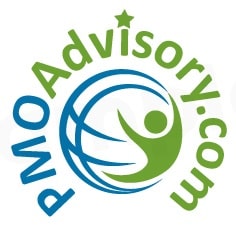Portfolio Management
Applying portfolio management is essential as studies have consistently shown organizations today fail to implement their strategies. The failure rate differs among studies, but even the most optimistic puts the failure rate at 50% with some studies showing it as high as 90%. One of the primary reasons for strategy implementation failure is poor project investment selection and poor organizational focus. This results in significant waste and ineffective use of precious assets and resources. Confronting the issue of investment selection and prioritization as well as limited resources, organizations must work “smarter” by focusing their limited resources on the most important and highest priority endeavors.
Portfolio management is the discipline of selecting, approving, and directing optimal active investment opportunities including projects, programs, operational engagements, and other endeavors. Portfolio managers require a deep understanding of organizational strategy and its alignment with execution, a well-honed governance structure to support and reinforce decisions (which may not always be popular), analyze capabilities including resource capacity and skills, manage communication, and embrace risk.
Portfolio management is about making decisions about the future and putting them into action. As portfolio managers you will be involved in the implementation of strategy through the realization of project and program delivery. For this reason portfolio managers need to develop their business skills and a key element of this is about understanding the components and processes associated with strategic and governance management. This course is designed to provide knowledge in this area to help you relate strategy to the work your organization performs on programs and projects.
Topics will focus on:
- Clarity of purpose and big-picture thinking. With Portfolio Management, not only are project, program, and portfolio professionals able to execute at a detailed level, but they are also able to understand and visualize how project, program, and portfolio management ties to an organization’s vision and mission. Portfolio Management fosters big-picture thinking by linking each project milestone and task back to the broader goals of the organization.
- Improved capacity planning and resource management. Capacity planning and effectively managing resources is largely dependent on how well your PMO executes its strategy and links the use of resources to company-wide goals.
- Higher degrees of productivity. PMOs that communicate to project teams and other stakeholders, such as employees, why and how project tasks are vital in creating value increase the likelihood of a higher degree of productivity.
- Increased agility. The process of aligning project and program activities with strategy helps companies become more agile, making it easier to manage change and to adapt as opportunities and obstacles arise.
- Improved ROI. Portfolio Management helps achieve clarity around broader company goals, improve resource management, and increase the productivity and agility of the organization, it can create greater wins and improve the return on investment (ROI) of any project. With Portfolio Management, projects investment is more likely to pay off and set companies on better footing for the future.
Insights on fundamental Portfolio Management processes including:
- Identify all existing and potential projects. Without a complete inventory of all current and on-the-horizon projects company-wide, it can be virtually impossible to establish a successful Portfolio Management strategy. This is the first step in developing effective project portfolio management and achieving the best ROI.
- Determine how each project will impact company-wide strategy. Each project must provide clear and undeniable value towards furthering company strategy in the mid- to long-term. This value should be fairly easy to trace, document, and communicate to all stakeholders.
- Prioritize each project. Once the value of projects has been substantiated, the PMO must prioritize which projects should be executed in what order and why. They ‘why’ is a crucial question. Not understanding why one project is a priority over others can be costly if the sequencing is off.
- Allocate resources. Once projects have been selected and prioritized, resources must be allocated and managed. Allocation reduces the chances of resources overlap, overload and potential waste. Very few companies, if any, can afford wasted resources. Make sure to carefully and accurately identify all available resources and assign each in ways that do not cause overloading and potential conflicts.
- Adjust project strategy as required. Because change is constant, it is important to revisit company goals, each project within each program, and all available resources to ensure alignment with strategy remains. Pouring good money and resources into non-relevant projects is an unfortunate consequence of not revisiting and adjusting to changes in strategy. This can be costly in many ways.
Target Audience
The target groups for this course are everyone who works in portfolio management environments including:
- Project and PMO professionals who are helping their organizations with project investment decisions
- Project leaders who are managing large quantities and pools of resources and wish to move into the driver seat
- Financial, marketing and operational professionals who work closely with project managers in their organization and who also influence and contribute to the strategy implementation process.
- Up and coming project professionals who are ready to take the next leap into mid- to upper-level leadership
- We also have seen a high number of senior project professionals who are “accidental project managers” and who have grown beyond PMP. This is an excellent introductory course for those who are considering the PfMP certification.
